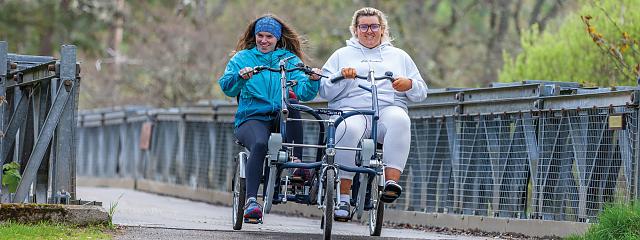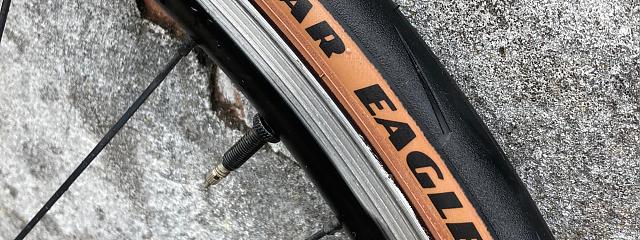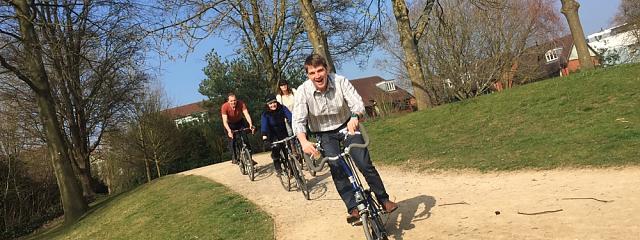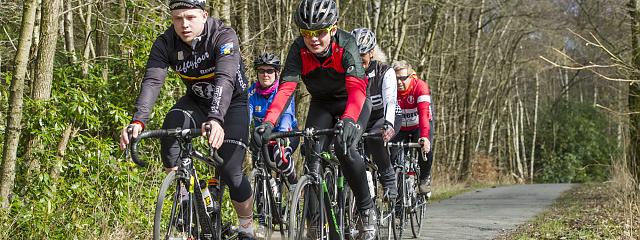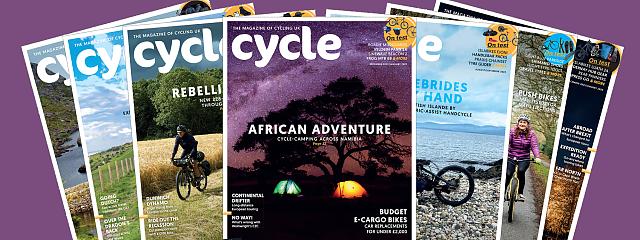
Bike test: Endurance road bikes
Bike test: Endurance road bikes
An endurance road bike is essentially an audax bike with marketing glitter. It’s a road bike designed not for racing but for efficient and comfortable mile eating – sportives, club rides, winter training, maybe long-distance commuting. Such bikes ran 25mm or 28mm tyres before they were adopted by racers, with room for mudguards to boot. Gears may (should!) go lower, and the handlebar may be higher so you’re not forced into an uncomfortable racing crouch.
Many endurance road bikes are nevertheless too racy for my tastes: a steeper-than-optimal seat tube angle tips you forward onto a handlebar that’s still too low, due to a shortish head tube and a carbon or aluminium fork steerer that can’t be stacked with spacers… To address this, I often choose the next frame size up. This raises the handlebar (taller head tube) and also gives more toe room (longer front centres). Sliding the saddle back, if necessary, makes the effective seat tube angle shallower, while a shorter stem fixes what would be an overlong reach to the handlebar.
That’s why the Ribble in this test is a Large rather than the Medium I ‘should’ be riding. And it’s why the stems are right at the top of the fork steerers in the photos. You have to be able to get the contact points where you want on a bike you’ll pedal for 50, 100 miles or more. It’s way more important the frame material or brake type.
As it happens, frame material and brakes are two of the key differences between the bikes on test. The Light Blue Wolfson 105 R7000 has a steel frame, with rim brakes that are deep enough to clear mudguards, like the audax bikes of old. The Ribble Endurance SL Disc Sport has chunky and angular carbon frameset and hydraulic disc brakes, like a lot of contemporary race bikes, but it still takes mudguards.
Frame and fork
Carbon fibre has a better strength-to-weight ratio but you can’t beat a skinny-tubed steel frame for aesthetics, especially when nicely painted. The Light Blue’s frame is in fact relatively light; the main triangle is Reynolds 853 and the stays are 725. This Medium frame is 1.7kg and the whole bike weighs less than the disc-braked Ribble.
The Light Blue’s top tube is long for a medium-sized frame, which means the front-centres distance is also longer – no toe overlap for me, although I did have to swap the 100mm stem fitted for an 80mm one. The down tube is biaxially ovalised to increase lateral stiffness at the bottom bracket and to reinforce it at the head tube. Dropouts are quick release, which still works fine for road bikes, particularly for lighter riders who don’t mash big gears.
I’m not keen on the Light Blue’s MTB-style full cable housing under the top tube; cable stops and bare cable here would look better. I’d prefer a metal head badge, too. But the other details are spot on. The mudguard mounts are hidden on the inside of the stays – as they are on the fork blades – for a neater look if you go without. And the frame maximises the room available under 57mm-drop callipers, with the blocks sitting in the bottom of the slots.
Space is tighter under the crown of the carbon fork. A mudguard does fit over the 25mm tyre but only just, and it needed careful adjustment to avoid rubbing. While carbon forks are ubiquitous on road bikes, I’d prefer a lugged steel fork here, similar to the one on Light Blue’s retro-style St John. It would be simpler to get the brake drop just right than with an off-the-peg carbon fork, and the ride could be more compliant; you can see a lightweight steel fork’s tips moving over rough chipseal.
Ribble’s Endurance range includes steel, aluminium and titanium frames as well as carbon fibre, with a variety of specifications and brake types. The SL Disc Sport is the entry-level carbon model with discs. It feels a bit racier than the Light Blue. The frameset has prominent aero features: the down tube and seat tube are truncated aerofoils; the fork blades are aero; the seatstays have been dropped lower; cables are routed internally. Ribble’s website makes much of these improved aerodynamics. For an endurance road bike, however, I’d call them marginal gains.
The frame angles are within half a degree of the Light Blue’s, but size for size it has a shorter head tube and a shorter front-centres. Upsizing to the Large enabled me to get the handlebar high enough for long-distance comfort. It didn’t quite eliminate toe overlap but would have done so without the front mudguard. Talking of which: clearance for them is no greater than that available with a 57mm sidepull. You’re limited to 25mm tyres with guards or 32mm without. It’s a strange constraint for a disc-brake bike.
The Ribble has thru-axles, which make sense given the disc brakes. There’s less flex at the axles, and I didn’t get any rotor rub. It’s good to see a creak-free threaded bottom bracket, too.
Components
Ribble’s website has an extensive à la carte menu for speccing your bike. I like this a lot. It’s how I fine-tuned the fit, by looking at the geometry tables and then choosing a Large frame, 38cm handlebar and 7cm stem. I also took the opportunity to add mudguards and faster-rolling tyres; I don’t want budget training tyres like Continental’s Ultrasport III on a £2,000 bike. There’s less scope to modify the Light Blue, although you can add mudguards (I did) and/or select different wheels.
Brakes are one of the biggest differences between the bikes. The sidepulls of the Light Blue are fine. I had no issues slowing or stopping, even in a downpour. Yet the 105 hydraulic discs of the Ribble are better, providing more powerful braking with less force required at the levers. Whether that’s something that’s nice to have or essential depends on your grip strength and the sort of hills you descend.
Both bikes have decent-rolling 25mm tubed tyres – Schwalbe Pro One for the Light Blue, Continental Grand Prix for the Ribble – which are plumped up slightly by the bikes’ wide rims. The Halo rims of the Light Blue are tubeless compatible, the Mavic Aksium’s of the Ribble are not. If you want to go tubeless on the Ribble you’ll need to specify Mavic Ksyrium 30 Disc wheels when buying (+£250).
Like many road bike wheels, these ones don’t have many spokes. The Aksiums have 24 front and rear, both tangentially spoked because of the braking torque. Th Halo’s front wheel has 20 radial spokes, the rear 24 tangential, with 16 on the drive side and eight on the non-drive side. That balances the spoke tension without requiring super-tight drive-side spokes.
Sadly, one of the Light Blue’s non-drive spokes snapped during the end-of-test photoshoot. The base of the aluminium nipple sheared and it pulled through the rim, still attached to the spoke. With only seven others on the same side, it buckled badly. Any component can fail, of course, but this one surprised me. At 10 stone I almost never break spokes, and the tension on the other non-drive spokes wasn’t excessive. Four more spokes per wheel would make me happier.
Both bikes have Shimano 105 drivetrains with a 50-34 double and an 11-speed cassette. The gear range of the Ribble is better as I asked for the standard 11-32 cassette to be swapped for an 11-34. The Light Blue has an 11-28, which would make me swear towards the end of a hilly century ride.
Seatposts are seldom a key factor in bike tests but I disliked the Ribble’s. The single-bolt saddle clamp needed a tremendous amount of torque to stop the nose kicking up towards the sky if I went over a bump. A fore-and-aft two-bolt clamp would be better, both for setting the saddle angle and keeping it in place. Swapping the post is complicated by the fact that the Ribble's is a D-shaped truncated aerofoil.
The Light Blue has a Driser 4-10 handlebar, so called for the 4º flare on the drops and the 10mm rise from the stem clamp. It looks odd but does gain you a little front-end height, which I appreciated. I was less keen on the bike’s mudguards. The front is too short and the stay bolts on both bulge prominently toward the tyres, compromising clearance.
The ride
Much is made of feel of different materials – the vibration damping effect of carbon, the springy resilience of steel and so on. The Ribble’s monolithic carbon frame is surely stiffer at the bottom bracket, while the skinnier stays of the Light Blue should be slightly more forgiving on long rides. But I can’t say I noticed significant real-world differences. Both bikes were stiff enough through the cranks for my modest power. Both were sufficiently comfortable, having similar tyres, similar geometries (M Light Blue vs L Ribble) and, after my tweaks, essentially the same riding position.
Aside from the brakes, the biggest difference in how the bikes rode was their aerodynamics. The Ribble was faster downhill and into the wind. Those truncated aerofoils doubtless helped but I think it was mostly due to the different handlebars. The Light Blue has a 42cm bar; the Ribble has a 38cm bar that I selected from the customisation options. A 38cm bar fits me better and tucks my shoulders in, improving the aerodynamics of what is by far the least aero thing on the bike: me.
I’d have preferred slightly slacker frame angles for both bikes. Shifting weight from your hands to your sit bones (slacker seat angle) eases the upper-body strain of long rides, while a bike that holds a straight line more easily (slacker head angle, more trail) is nice to have when you’re tired. I'd also have liked wider tyres (28mm or 32mm), for a plusher ride and better traction on descents and wet roads.
Verdict
As a full carbon bike with 105 and hydraulic brakes, the Ribble Endurance SL Disc is good value. Its standout features are the groupset and the customisation options. Heavier riders with a punchier pedalling style may appreciate its stiff (and aero) carbon frame but I’d rather have bigger clearances and less racy angles – even if that meant a ‘downgrade’ to aluminium.
The Light Blue Wolfson 105 has a well-designed Reynolds 853/725 frame. I like how it looks and how it rides, and would consider buying it as a frameset. As a complete bike, I’d hesitate. The brakes are fine but I had an obvious issue with the wheels, and would also change the cassette, stem, handlebar, mudguards and maybe the fork – all of which would ramp up the cost.
Other options
Spa Cycles Titanium Audax 105 R7000 £1,495
Carbon-forked titanium audax bike with 72º/72.5º head/seat angles, equipped with 11-speed 105. Will fit 28mm tyres and mudguards under its brake callipers. Currently on offer.
Trek Domane AL 5 GEN 4 £2,150
Gravel-influenced aluminium road bike with a carbon fork, 12-speed 105, hydraulic discs and clearance for 38mm tyres and mudguards.
First published in Cycle magazine, October/November 2023 issue. All information correct at time of publishing.
Our test promise
At Cycling UK and Cycle magazine, we are proudly independent. There’s no pressure to please advertisers as we’re funded by our members. Our product reviews aren’t press releases; they’re written by experienced cyclists after thorough testing.
Tech spec
Light Blue Wolfson 105 R7000
Price: £1,984.99 as tested (frameset £899.99).
Sizes: S, S/M, M(tested), M/L, L.
Weight: 9.05kg/19.91lb (inc guards, no pedals).
Frame & fork: TIG-welded, double-butted Reynolds 853 steel main triangle, Reynolds 725 seatstays and chainstays, with 130mm QR dropouts and fittings for& mudguard, rear rack and two bottles. Carbon fork with 1 1/8in aluminium steerer, QR dropouts and mudguard fittings.
Wheels: 25-622 Schwalbe One tyres, Halo Evaura wheels (tubeless-ready 19mm rims with 20 radial spokes on Halo RS front hub and 24 1×/2× spokes on Halo RS 6Drive rear hub.
Transmission: no pedals, 172.5mm Shimano 105 R7000 crankset with 50-34 chainrings, Shimano SM-BBR60 Hollowtech II bottom bracket, Shimano HG601 11-speed chain, 11-28t Shimano R7000 cassette. Shimano 105 R7000 STI shifters, Shimano 105 R7000 derailleurs. 22 ratios, 33-122in.
Brakes: Shimano 105 R7000 levers, Tektro Quartz callipers.
Steering & seating: Genetic padded cork tape, 420×31.8mm Genetic Driser 4-10 handlebar, 100mm×6º Genetic stem, 1 1/8in Gusset threadless headset. Genetic STV saddle, 340×27.2mm Genetic STV seatpost, Allen bolt seatpost clamp.
Equipment: unbranded chrome-plastic mudguards (+£35).
Ribble Endurance SL Disc Sport
Price: £2,124 as tested, plus £40 delivery (frameset £1,399.99+).
Sizes: XXS, XS, S, M, L (tested), XL.
Weight: 9.45kg/20.79lb (inc guards, no pedals).
Frame & fork: Toray T1000/T800 carbon fibre frame with 12×142mm thru-axle and fittings for mudguard and two bottles. Full carbon fibre fork with tapered steerer, 12×100mm thru-axle, mudguard fittings.
Wheels: 25-622 Continental Grand Prix tyres (+£50 upgrade), Mavic Aksium CenterLock Disc wheels (17mm Aksium rims, Mavic hubs, 24×2 straight-pull spokes).
Transmission: no pedals, 172.5mm Shimano 105 R7000 crankset with 50-34 chainrings, Shimano SM-BBR60 Hollowtech II bottom bracket, Shimano HG601 11-speed chain, Shimano CS-HG700 11-speed 11-34 cassette. Shimano 105 R7020 11-speed hydraulic STI levers, Shimano 105 R7000 derailleurs (bolt-on front). 22 ratios, 27-122in.
Brakes: Shimano 105 R7020 hydraulic levers, R7070 flat-mount callipers with 160mm Tektro CenterLock rotors.
Steering & seating: Level cork bar tape, 380×31.8mm Level 6061 alloy handlebar, 70m×9º Level 6061 alloy stem, Ribble SL headset. Prologo Kappa RS saddle, 390×27/30mm Ribble SL carbon D-shaped seatpost, internal wedge seatpost clamp.
Equipment: SKS P35 Mudguards (+£65), two nylon bottle cages (@ +£5)














